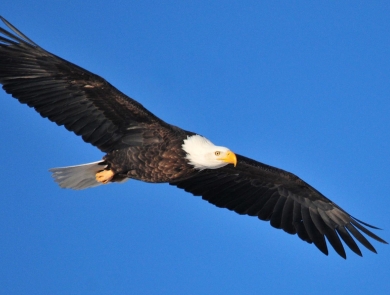What We Do
Our Services
Human demands on migratory birds leave them vulnerable. Permits enable the public to engage in specific activities consistent with the Migratory Bird Treaty Act and the Bald and Golden Eagle Protection Act while providing a means to balance use and conservation. Permits also allow us to build partnerships and monitor activities to determine how they affect migratory bird populations.
As authorized by the Migratory Bird Treaty Act, the U.S. Fish and Wildlife Service issues permits to qualified applicants for activities such as falconry, raptor propagation, scientific collecting, special purposes (rehabilitation, educational, migratory game bird propagation, and salvage), take of depredating birds, taxidermy, and waterfowl sale and disposal.
The regulations governing migratory bird and eagle permits can be found in 50 CFR part 13, 50 CFR part 21 (Migratory Bird Permits), and 50 CFR part 22 (Eagle Permits):
50 CFR 13 General Permit Procedures
Importation, Exportation, and Transportation of Wildlife
Our Laws and Regulations
The Migratory Bird Treaty Act and the Bald and Golden Eagle Protection Act guide what we do.
Information about the status of revisions to the Migratory Bird Treaty Act can be found below:
Our Services
The Migratory Bird Permit Office administers over 20 permit types (and over 16,000 permits annually) across the country. Check out Our Services for more information about our program.
Our Library
Our mission to conserve migratory birds and their habitats includes the administration of permits as a tool in conserving bird populations, as well as providing guidance on ways to reduce impacts to bird species. Our Migratory Bird Permit Program Library hosts policy documents, NEPA evaluations, best management practices, conservation plans, and other useful resources.















